05 - Taikun Ingress - CertManager
For production environments, we naturally want to use a custom domain and HTTPS. There are multiple ways your organization might handle certificates. In this example, we will use Cert Manager, an industry-standard tool for automated certificate management in Kubernetes.
DNS Configuration
DNS setup depends on your domain registrar.
For demonstration purposes, we will use sslip.io – a wildcard DNS service that resolves anything like app.x.x.x.x.sslip.io to IP x.x.x.x. It is perfect for testing and demos.
Note
In a production environment, update your DNS records to point your domain to the Bastion IP address.
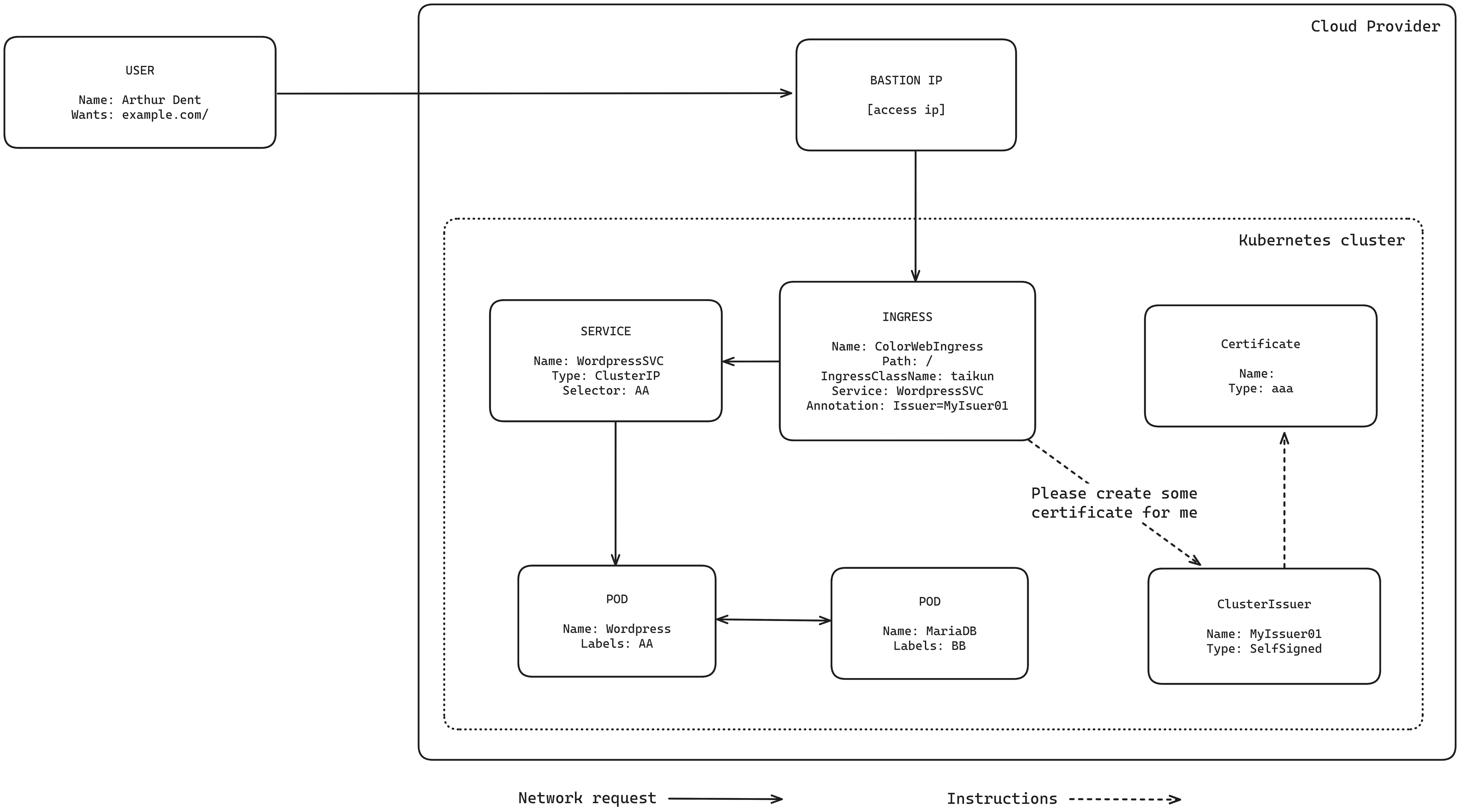
How it works
Lab Excercise:
1. Deploy a Kubernetes Cluster
- Use Taikun CloudWorks to deploy a new Kubernetes Cluster.
- OR use existing cluster.
2. Deploy Cert Manager
- Use the Taikun Managed Catalog App and find cert-manager.
- Enable
crds.enabled
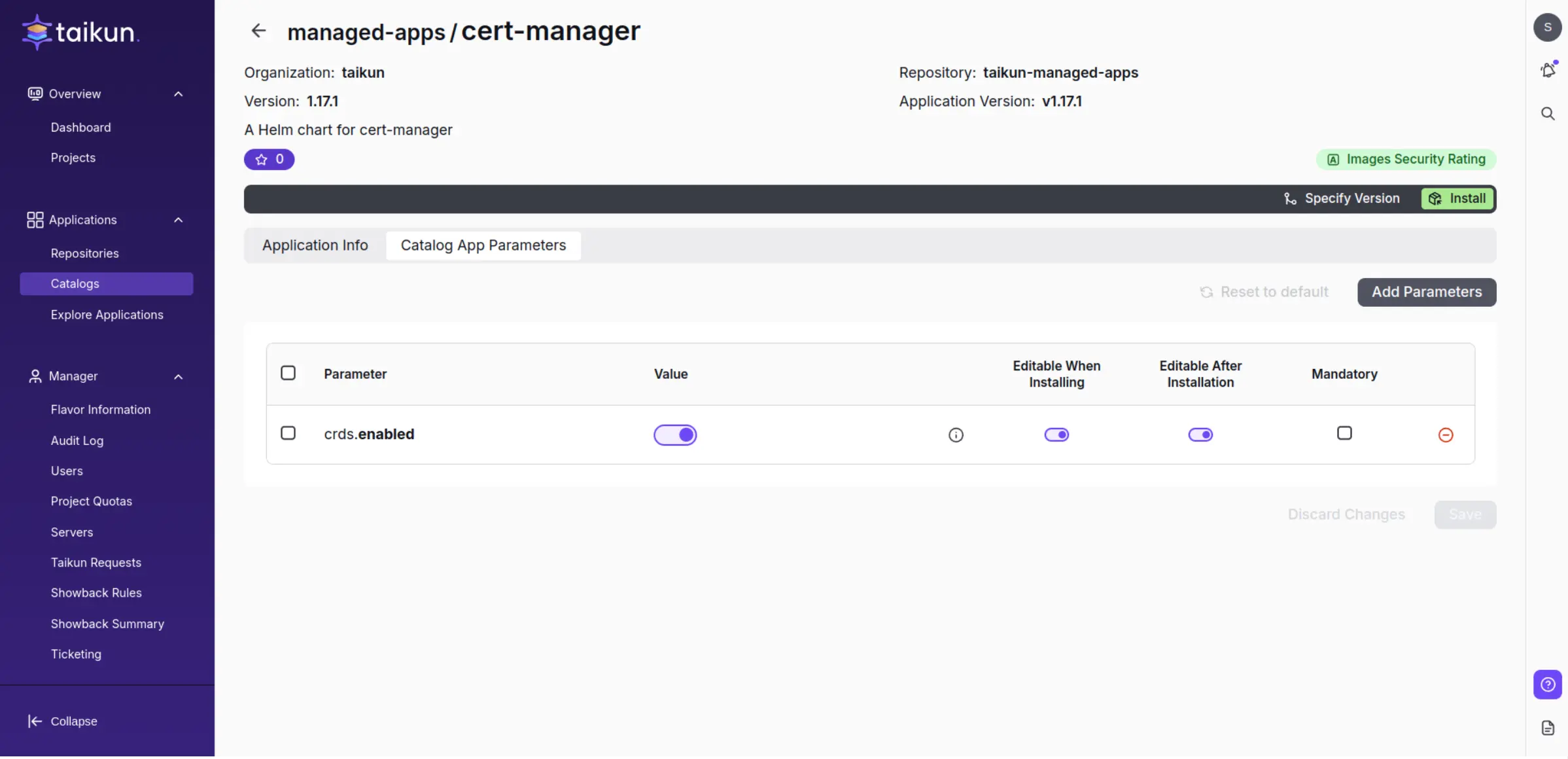
cert-manager
3. Create a self signed Cluster Issuer
- The ClusterIssuer resource tells Cert Manager how to obtain certificates.
- For this example, we’ll use a simple self-signed ClusterIssuer for sslip.io. Here’s where you’d use Let’s Encrypt with DNS or HTTP validation (likely via Automated Certificate Management Environment - ACME) for real domains.
apiVersion: cert-manager.io/v1
kind: ClusterIssuer
metadata:
name: selfsigned-issuer
spec:
selfSigned: {}
Tip
Apply the yaml file same like in first guide
4. Deploy WordPress Application
- Use the Taikun Managed Catalog App to deploy the WordPress application. Don't forget to enable Extra Values in common settings.
- Make sure to enable Taikun Ingress in the app parameters.
- This will automatically create an Ingress resource to expose the application to the internet.
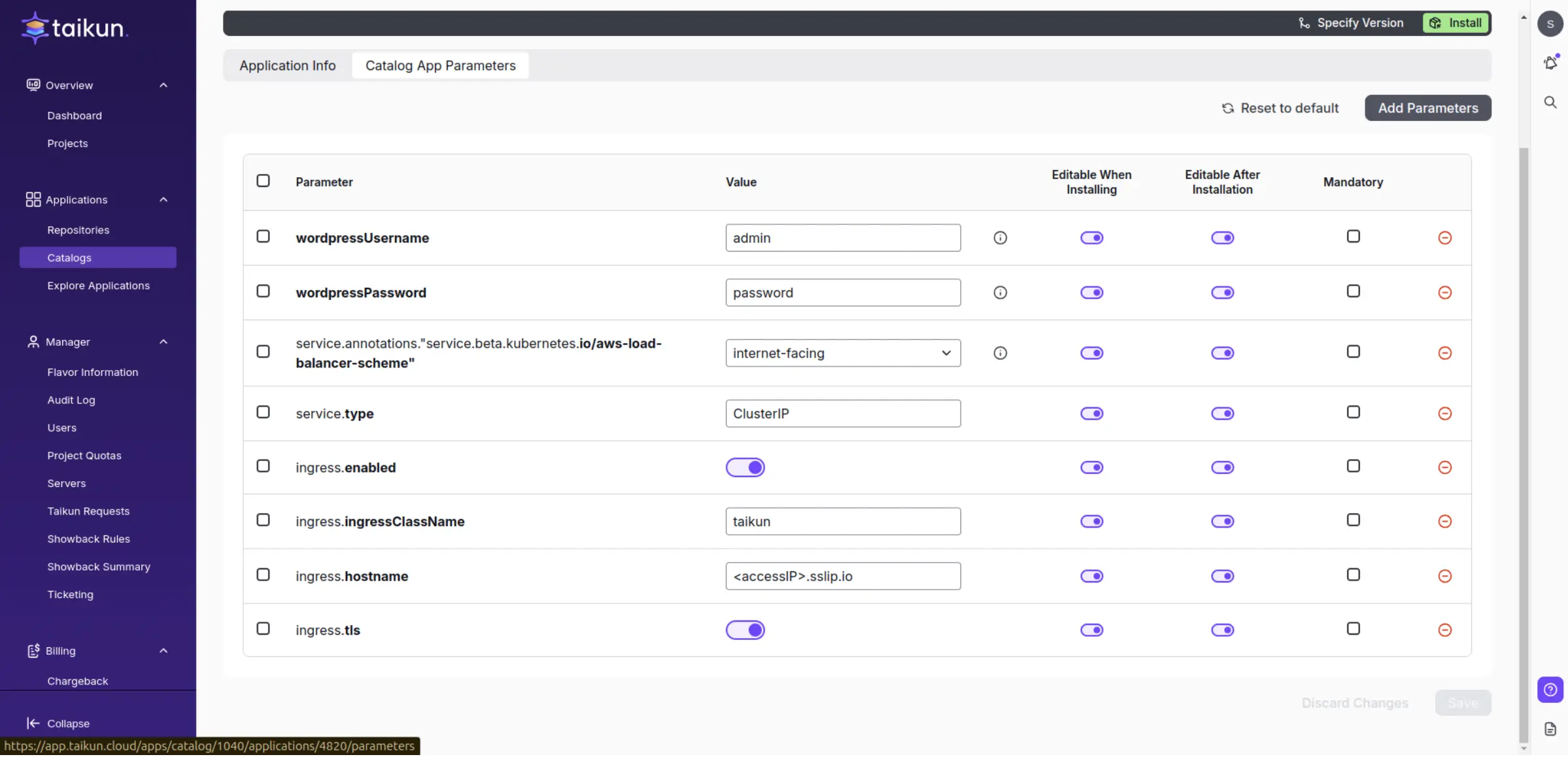
Parameters for WordPress
- In the extra parameter section of the WordPress Deployment form, add the following annotation to instruct Cert Manager to issue a certificate:
- This tells Cert Manager to use the self-signed ClusterIssuer for issuing the TLS certificate.
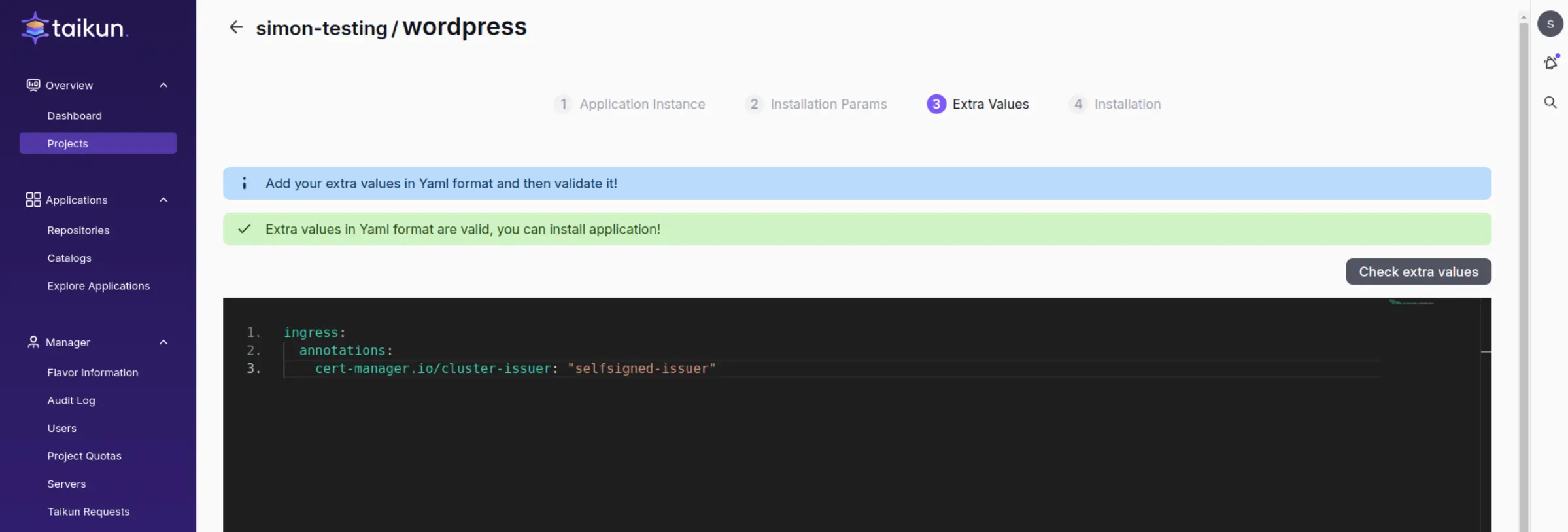
Extra Values for WordPress
5. Verify HTTPS and Domain Access
- Once the application is deployed, Cert Manager will generate a self-signed TLS certificate.
- The WordPress application will be accessible via the domain with HTTPS.
- Verify that the site loads correctly and the connection is secured with a valid (self-signed) certificate.
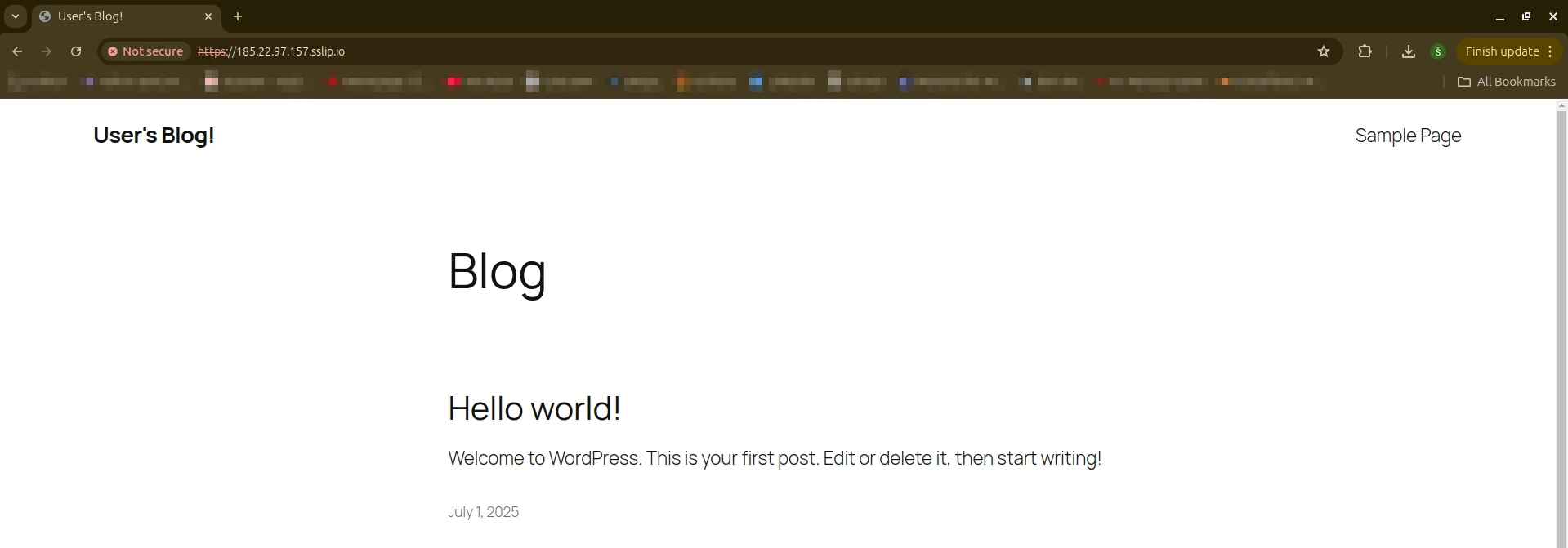
HTTPS WordPress